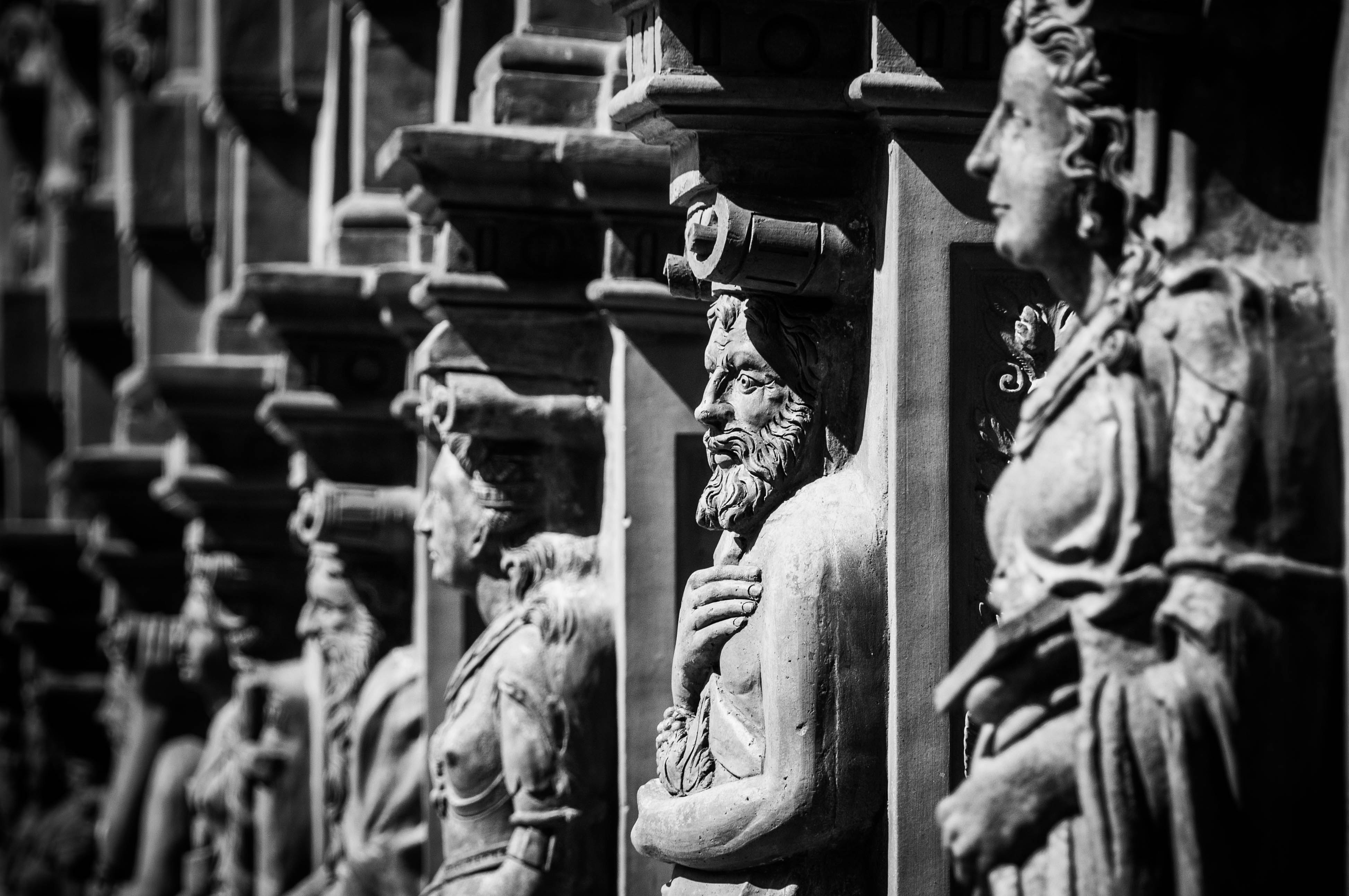“Dude, we better hurry. We don’t want to be late for Monsieur Paret,” my friend yelled across the hallway in Trancos as we rushed to lecture. It was winter quarter of my freshman year in January of 1982 at Stanford, and the professor for HIST 2: “Europe from the Wars of Religion to the Nation-State” was Peter Paret. We had noticed he had some kind of European accent, so we assumed that he was French based on the pronunciation of his last name. So, we referred to him as Monsieur Paret when we talked about class.
The History 1-2-3 sequence was one path to completing what was then the year-long “Western Culture” requirement for freshmen. History 1 in autumn quarter with Professor Carolyn Lougee had gone OK, but not great. I had thought it would start with ancient history, but it began with late antiquity. I remember trying to soldier my way through St. Augustine’s “Confessions” in preparation for the first discussion section meeting and having to re-read the pages that I couldn’t understand. Stanford was a big shock coming from an average public high school.
Professor Lougee liked to use images of art in lecture, but I couldn’t grasp the structure of her lectures. I tried to take notes verbatim, but was never able to finish a sentence. I learned that trying to study for an exam from those notes was impossible at midterm time. I was floundering, but somehow I got a “B” in the class (the highest grade my first quarter, but the lowest grade I had ever received in a history class). I found I understood Professor Paret’s lectures in History 2 a bit better, partly due to adjusting to college, but possibly also due to his more explicit lecture structure.
However during one class, after my friend and I sat down in Kresge Auditorium at 9 a.m., Professor Paret started giving a lecture on someone whose name sounded like “Geh-teh” and occasionally mentioned someone named “Ver-teh.” He often strung them together, by talking about “Geh-teh’s Ver-teh” and “Ver-teh by Geh-teh.”
I had no idea what he was talking about. The required reading for that week was “The Sorrows of Young Werther” by someone named Goethe, but I thought the author’s name was pronounced “Goyth” and the main character of the story was “Were-thur.” I was confused. I wondered if I was supposed to have read something else.
I had read the assignment the night before the lecture, enjoyed it and understood it more than Diderot’s “D’Alembert’s Dream” that I think we had read the preceding week. I finally guessed from context that “Geh-teh” might be Professor Paret’s way of pronouncing “Goyth.” I felt sorry for poor Werther, and finally grasped from Professor Paret’s lecture that he was an example of Romanticism. But later that week in discussion section, I discovered that the girls in class thought Werther was pathetic in his obsessive love of Lotte that led to his suicide. “He needs to get over it,” one of them said.
After graduation, I ended up going to graduate school for ancient history and taught for about 30 years at the college level. Along the way, I learned German. When I taught Western Civilization, I would confess to my students my ignorance in Professor Paret’s class about “Goyth” versus “Geh-teh.” They always liked that story.
Last summer, I discovered Peter Paret was still alive and publishing in the field as an emeritus professor of historical studies at the Institute for Advanced Study. I felt driven to reach out to him with the story of how I hadn’t understood his lecture on Goethe back in 1982 when I was one of hundreds of students in Kresge Auditorium. He wrote back a kind and amusing response, mentioning that he had recently rediscovered his own notebooks for history classes he had taken when he returned to Berkeley as an undergraduate in 1946 (after military service during World War II).
I looked him up on Wikipedia and discovered that he had a fascinating life. Born in Germany in 1924 to a French family that had moved to Germany in the 1600s, he and his mother moved to Vienna in 1932 where she studied with Sigmund Freud, and then they moved to the U.S. in 1937. After three years of service in the U.S. Army infantry in New Guinea and the Philippines and undergraduate study at Berkeley, he did graduate work at King’s College in London. After teaching first at UC Davis and then Stanford, he was appointed the Andrew W. Mellon Professor in the Humanities at the Institute for Advanced Study in 1986. And he published many important books, including works on Frederick the Great, von Clausewitz, Prussian history and 19th century German art history.
Professor Paret ended his email to me by saying he was glad that “whatever peculiarities were attached” to his lectures did not have a “negative impact on my professional interests.” I remember I was happy I received a “B+” in the class, but his email was so welcoming that I wish I had the courage in 1982 to go to his office hours after his Goethe lecture and talk with him. Who knows, I might have ended up specializing in modern instead of ancient Europe. I just learned he passed away last September. That saddens me, but reaching out to him gives me a feeling of closure to his lecture on “Geh-teh.”
An earlier version of this article inaccurately said that the Institute for Advanced Study was at Princeton University. The institute is independent.
Contact Robert Frakes at robertmfrakes ‘at’ gmail.com.
